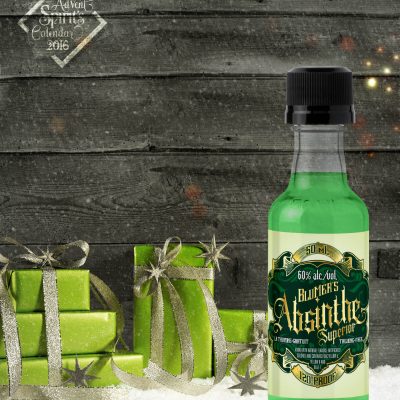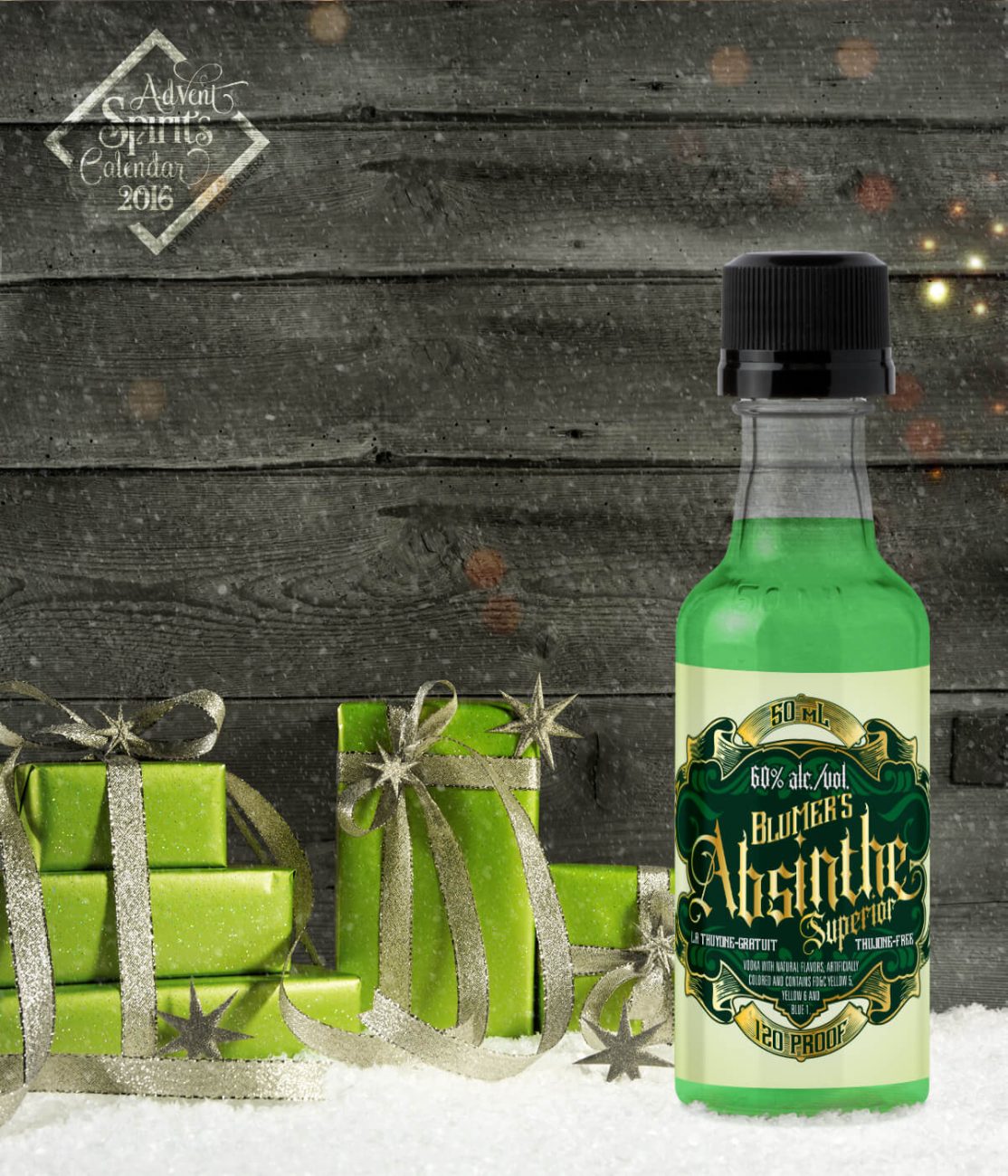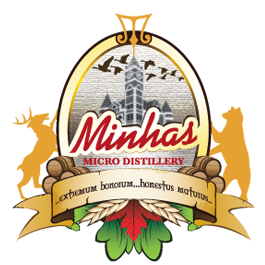

Blumer’s Absinthe
Day 9


Content
Dance with the green fairy tonight!
Ingredients
-
Grain Neutral Spirits
-
Water
-
Natural & Artificial Flavour
-
Artificially Coloured
The precise origin of absinthe is unclear. The medical use of wormwood dates back to ancient Egypt circa 1550 BC. Wormwood extracts and wine-soaked wormwood leaves were used as remedies by the ancient Greeks. The first clear evidence of absinthe in the modern sense of a distilled spirit containing green anise and fennel, however, dates to the 18th century.
Absinthe is historically described as a distilled, highly alcoholic (45 to 74% alc./vol ABV) It is an anise-flavoured spirit derived from botanicals, including the flowers and leaves of grand wormwood together with green anise, sweet fennel (often called “the holy trinity”), and other medicinal and culinary herbs. Absinthe traditionally has a green color and is commonly referred to in historical literature as “la fée verte” (the green fairy).
Absinthe has often been portrayed as a dangerously addictive psychoactive drug. The chemical compound thujone, although present in the spirit in only trace amounts, was blamed for its alleged harmful effects. By 1915, absinthe had been banned in the United States and in much of Europe, Any psychoactive properties attributed to absinthe, apart from that of the alcohol, have been much exaggerated. A revival of absinthe began in the 1990s, following the adoption of modern European Union law food and beverage laws that removed longstanding barriers to its production and sale. The legacy of absinthe as a mysterious, addictive, and mind-altering drink continues to this day. Although absinthe was vilified in many movies and works of art , it has not been demonstrated to be any more dangerous than ordinary spirits.
Cocktail Recipe
| In a Champagne Flute take 1.5 oz Blumers Absinthe. |




